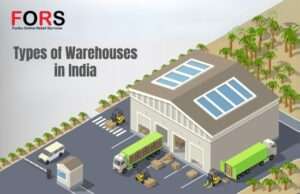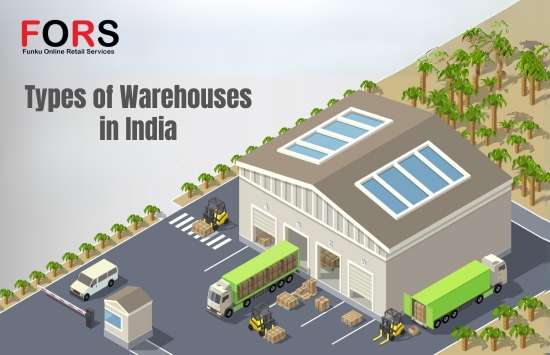Types of Warehouses in India | Meaning, Types and Function

Warehousing plays an important role throughout the supply chain, acting as the primary element in efficiently managing, storing and distributing items. The type of warehouse that the company chooses to use will have a major impact on the operations of its company as well as its efficiency in terms of cost and with overall effectiveness. In the article below identify different types of warehouses designed to meet specific industry and business requirements.
Types of Warehouses
1. Public Warehouses:
So, a Public warehouse is like a storage space that’s open to anyone for business. It’s not owned by any one specific company. It’s like a shared storage area. Businesses can rent space there when they need it. It’s easy because you only pay for the space you’ll need and you do not have to think about finding the storage space you need. Plus, they often offer extra services like helping with shipping and managing inventory.
2. Private Warehouses:
Alright, think of a Private warehouse as having your own storage space. It’s a place that belongs to just your company, where you keep all your products you’re selling or materials for making things.
The fantastic aspect is you can determine the overall look and structure of the building’s interior, along with overseeing the entire process. Moreover, since it’s exclusively for your company, you enjoy added control over security measures, ensuring the safety of your belongings.
Imagine having a secret room where you stash all your important things, and only you have the key – that’s a private warehouse for a company. It’s a great option if you’ve got a lot of products to keep and you would like things to go your own best way. Of course, that implies that you must be on top of everything, from tidying it up to ensuring that everything runs efficiently. But hey, it’s like having your own little storage kingdom!
3. Distribution Centers:
Distribution centers (DCs) are centers or areas in a supply chain that are specifically designed to facilitate the efficient storage, receipt, and distribution of goods to retailers, customers, and other centers for distribution. They are essential to the supply chain and logistics management of goods.
Distribution centers are strategically located to optimize transportation and reduce lead times. Their effectiveness is essential for satisfying customer requirements, reducing expenses, and enhancing overall performance of the supply chain. Technology and automation play an increasingly important role in streamlining distribution center operations in modern supply chains.
4. Climate-Controlled Warehouses:
The primary purpose of Climate-Controlled Warehouses is to store products that fall into the category of those sensitive to temperature variations, humidity, or other environmental conditions. This category covers perishable items like fresh produce, fruits and vegetables and frozen food items like frozen meats and ice cream. Pharmaceuticals, another category, often require precise temperature control to ensure the efficacy and safety of vaccines or Medicines. Biotechnological products, chemicals, and even certain electronic components also fall within this category, as they may be sensitive to temperature changes and require controlled storage conditions to prevent degradation.
The specific temperature and humidity levels maintained in these warehouses depend on the category of goods stored. The facilities are often equipped with monitoring systems to ensure that conditions remain within the specified range.
5. Fulfillment Centers:
The Fulfillment Centers are the centers that manage processes, storage, and shipping of merchandise sold by online retailers. These centers play a crucial role in the e-commerce supply chain by efficiently managing inventory and order fulfillment processes.
By outsourcing fulfillment services to centers that specialize in this type of e-commerce, companies can concentrate on the core tasks of product development and marketing while profiting from the efficiency and knowledge of the fulfillment center’s operations.
6. Automated Warehouses:
Automated warehouses are places where all aspects of storage, retrieval, and transportation of goods are managed through automated systems, reducing human interaction requirements. These warehouses leverage advanced technologies and robotics to streamline and optimize the processes involved in managing inventory.
The main objectives of automated warehouses are to boost efficiency, cut operating costs, reduce mistakes, and increase general efficiency when it comes to the distribution and storage of products.



